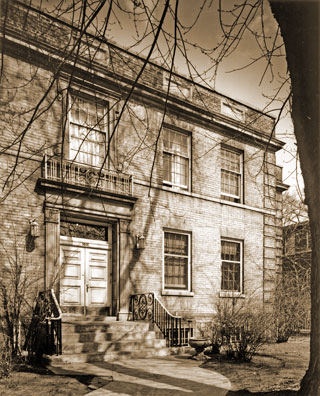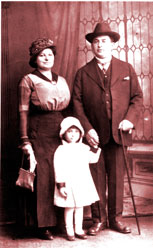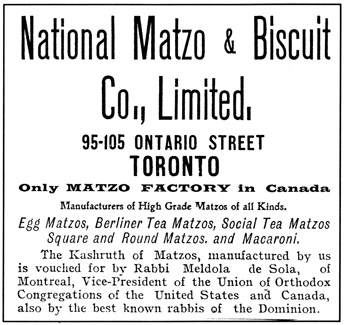 When Dr. Daniel Drucker of Toronto’s Mount Sinai Hospital receives the US$150,000 Manpei-Suzuki prize for groundbreaking diabetes research this February (2015), he will be only the latest in a long parade of medical researchers at the world-famous institution to be recognized for their excellence.
When Dr. Daniel Drucker of Toronto’s Mount Sinai Hospital receives the US$150,000 Manpei-Suzuki prize for groundbreaking diabetes research this February (2015), he will be only the latest in a long parade of medical researchers at the world-famous institution to be recognized for their excellence.
A researcher engaged in a different sort of quest — probing the origins of the Mount Sinai Hospital — is struck by Mount Sinai’s humble beginnings more than a century ago. Mount Sinai’s roots go back to about 1910 when nurse Dorothy Goldstick (later Dworkin), Ida Siegel and some volunteers and medics opened a free Jewish medical dispensary on Elizabeth Street just south of Agnes (Dundas) in Toronto’s old Ward neighbourhood.
Toronto then had a burgeoning population of about 18,000 Jews, up from only 3,000 a decade earlier. Most were poor Yiddish-speaking recent immigrants in need of assistance.
As Dworkin reveals in a biographical essay, she became a maternity nurse in 1907 and worked with Dr. S. J. Kaufman, a doctor from Cleveland who set up a private dispensary for Jewish patients in the Ward. The clinic proved popular because Yiddish was spoken there and visits cost only 50 cents instead of the usual $1 charged at other facilities. Drugs were supplied by the Hashmall pharmacy.
Dworkin and others opened the free Jewish medical dispensary after Kaufman returned to the States in 1909. Apart from medical reasons, a Jewish-run clinic was an absolute necessity in the eyes of its founders because the Presbyterian Church was also providing free medical services to local Jews from a clinic on Teraulay (Bay) Street while trying to convert them to Christianity.
Again in reaction to the missionaries, Dworkin, Siegel and others formed a Women’s Auxiliary that distributed pasteurized milk at the very low rate of two cents a pint. It also founded a Jewish Orphanage that was later headquartered on Annette Avenue.
Although the Jewish medical dispensary “petered out” after Dworkin left in 1911 to get married, the impetus for a Jewish hospital in Toronto remained strong. A small historical pamphlet published by the women’s charitable organization Ezras Noshem (“Helping Women”) tells the next chapter of the story.
Founded in 1913, Ezras Noshem was galvanized into action by the heartbreaking account of a 96-year-old patient at the Don Avenue Incurable Home. Its president, Slova Greenberg, “could not bear to see the woman cry and pray that she might die among Jews,” and vowed to establish a home for Jewish elderly. Founded in 1917 on Cecil Street, the Jewish Old Folks Home evolved over the decades into what is now the Baycrest Centre.
Empowered by its own success, Ezras Noshem next pushed to raise funds for a Jewish hospital, and in December 1921 purchased an existing but primitive facility on Yorkville Avenue, opening it in 1922 as a 20-bed hospital. The years brought enormous upgrades and improvements: the hospital façade that is still visible on Yorkville today was not part of the original structure, but rather the result of a 1935 expansion.
Decades of planning and fund-raising went into the new Mount Sinai Hospital on University Avenue and involved the concerted efforts of many players, including Dworkin, various hospital volunteer women’s groups, a board of directors chaired by E. F. Singer, and a group of Jewish doctors initially called the Toronto Jewish Medical Association. Preserved at the Archives, the Association’s minute books from the mid-1920s show that the doctors thought the hospital board much too sluggish and sought diplomatic means of persuading its members to start planning for the much bigger, modernized Jewish hospital that was already so desperately needed.
The new Mount Sinai opened on University Avenue on August 18, 1953, and has become a world-renowned centre of excellence. Not the least of the wonderful things to occur there is the birth of this reporter, along with his sister, in September 1953 as the first twins born in the new hospital. How true, indeed, is the observation that mighty oaks do from tiny acorns grow. ♦
◊ Originally appeared in the Canadian Jewish News, January 2015. This is the first in a series of articles, funded by the J. B. & Dora Salsberg Fund of the Jewish Foundation, about Toronto’s Jewish institutions as reflected in the resources of the Ontario Jewish Archives Blankenstein Family Heritage Centre (www.ontariojewisharchives.org). Those seeking more details about Mount Sinai’s history may wish to consult From Generation to Generation: A History of Toronto’s Mount Sinai Hospital, by Lesley Marrus Barsky (1998).







